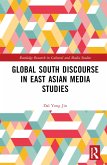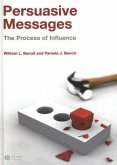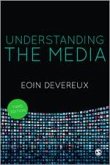Teaching and Training for Global Engineering
Perspectives on Culture and Professional Communication Practices
Teaching and Training for Global Engineering
Perspectives on Culture and Professional Communication Practices
- Broschiertes Buch
- Merkliste
- Auf die Merkliste
- Bewerten Bewerten
- Teilen
- Produkt teilen
- Produkterinnerung
- Produkterinnerung
Provides a foundation for understanding a range of linguistic, cultural, and technological factors to effectively practice international communication in a variety of professional communication arenas * An in-depth analysis of how cultural factors influence translation, document design, and visual communication * A review of approaches for addressing the issue of international communication in a range of classes and training sessions * A summary of strategies for engaging in effective e-learning in international contexts * A synopsis of how to incorporate emerging media into international teaching and training practices…mehr
![Translation in the Global Village Translation in the Global Village]() Translation in the Global Village144,99 €
Translation in the Global Village144,99 €![Global South Discourse in East Asian Media Studies Global South Discourse in East Asian Media Studies]() Dal Yong JinGlobal South Discourse in East Asian Media Studies180,99 €
Dal Yong JinGlobal South Discourse in East Asian Media Studies180,99 €![The Uses of Digital Literacy The Uses of Digital Literacy]() John HartleyThe Uses of Digital Literacy204,99 €
John HartleyThe Uses of Digital Literacy204,99 €![Persuasive Messages Persuasive Messages]() William BenoitPersuasive Messages110,99 €
William BenoitPersuasive Messages110,99 €![Understanding the Media Understanding the Media]() Eoin DevereuxUnderstanding the Media193,99 €
Eoin DevereuxUnderstanding the Media193,99 €![Teaching Seventeenth- And Eighteenth-Century French Women Writers Teaching Seventeenth- And Eighteenth-Century French Women Writers]() Teaching Seventeenth- And Eighteenth-Century French Women Writers114,99 €
Teaching Seventeenth- And Eighteenth-Century French Women Writers114,99 €![Culture and Crisis Communication Culture and Crisis Communication]() Culture and Crisis Communication60,99 €
Culture and Crisis Communication60,99 €-
-
-
Hinweis: Dieser Artikel kann nur an eine deutsche Lieferadresse ausgeliefert werden.
- Produktdetails
- Verlag: John Wiley & Sons / Wiley
- Seitenzahl: 310
- Erscheinungstermin: 28. März 2016
- Englisch
- Abmessung: 234mm x 155mm x 23mm
- Gewicht: 431g
- ISBN-13: 9781118328026
- ISBN-10: 1118328027
- Artikelnr.: 39562254
- Herstellerkennzeichnung
- Libri GmbH
- Europaallee 1
- 36244 Bad Hersfeld
- 06621 890
- Verlag: John Wiley & Sons / Wiley
- Seitenzahl: 310
- Erscheinungstermin: 28. März 2016
- Englisch
- Abmessung: 234mm x 155mm x 23mm
- Gewicht: 431g
- ISBN-13: 9781118328026
- ISBN-10: 1118328027
- Artikelnr.: 39562254
- Herstellerkennzeichnung
- Libri GmbH
- Europaallee 1
- 36244 Bad Hersfeld
- 06621 890
Foreword, xix
Acknowledgments, xxvii
Introduction, xxix
SECTION I DESIGN CONTEXTS
1 The Imperative of Teaching Linguistics to Twenty-First-Century
Professional Communicators 3
Bruce Maylath and Steven Hammer
1.1 Introduction, 4
1.2 Why Linguistics? The Dangers of Monolingualism, 5
1.3 Linguistic Knowledge - Where Did It Go?, 6
1.4 Linguistics for the Professional Engineer and Communicator, 8
1.5 Conclusion, 15
2 Cultural Contexts in Document Design 19
Yiqin Wang and Dan Wang
2.1 The Challenges of International Communication, 19
2.2 Literature Review, 21
2.3 Study Design, 25
2.4 High- or Low-Context Culture and the Extent of Explicit Description, 26
2.5 Thought Pattern and Content Organization, 29
2.6 Cultural Contexts in Text-Graphic Relationships, 33
2.7 Cultural Backgrounds, 38
2.8 Applying Ideas to Training in Technical and Professional Communication,
39
2.9 Conclusion, 42
3 Teaching Image Standards in a Post-Globalization Age 47
Audrey G. Bennett
3.1 Image Design and Consumption in a Post-Globalization Age, 48
3.2 Socially Conscious Communication Design and the Evolution of Image
Standards, 49
3.3 Standards for Communicatively Effective Images, 52
3.4 Implementing Objective Metrics in Technical and Professional
Communication Classes, 56
3.5 Conclusion, 63
SECTION II SOCIETAL CONTEXTS
4 Linux on the Education Desktop: Bringing the "Glocal" into the Technical
Communication Classroom 69
Brian D. Ballentine
4.1 Introduction, 69
4.2 Linux-Dominance and Absence in Different Markets, 70
4.3 Linux on the Desktop, 74
4.4 Aggressive Evangelism, 78
4.5 Extremadura, 80
4.6 The Glocal, 82
4.7 Situating Professional Communication Students in the Glocal, 82
4.8 Using Linux on the Desktop, 83
4.9 Conclusion, 87
5 Teaching the Ethics of Intercultural Communication 91
Dan Voss and Bethany Aguad
5.1 Introduction: Globalization Introduces an Intercultural Dimension to
Business Ethics, 92
5.2 Literature Review Represents the Intersection of Ethics, Intercultural
Communication, and Science/Engineering, 93
5.3 Four Classical Ethical Models Form the Foundation for Studying the
Ethics of Intercultural Communication, 98
5.4 Two Value Models Help Rank Values to Resolve Conflicts in Favor of the
Greatest Good or the Least Harm, 103
5.5 Value Models within Technology-Based Companies and Professional
Associations Offer Broad Ethical Perspectives, 106
5.6 Before Analyzing Ethical Conflicts in an Intercultural Context, Its
Important to Understand the Cultural Differences Involved, 109
5.7 Analyzing Case Histories via a Multi-Tiered Process of Ethical Models
and Cultural Filters that Clarifies Ethical Conflicts, Defines Alternative
Actions, and Predicts Outcomes, 116
5.8 Suggestions for Integrating the Specialized Topic of this Chapter into
Academic Courses and Industry Training Classes, 118
5.9 Conclusion: The Authors Invite Further Research and Contributions, 121
SECTION III ONLINE CONTEXTS
6 Autonomous Learning and New Possibilities for Intercultural Communication
in Online Higher Education in Mexico 127
Cesar Correa Arias
6.1 Introduction, 128
6.2 The Nature and Characteristics of Autonomous Learning, 129
6.3 Understanding and Applying Autonomous Learning, 134
6.4 The Role of ICTs in Autonomous Learning, 139
6.5 The Culture of Autonomous Learning Inside Institutions of Higher
Education, 140
6.6 Conclusion, 145
7 E-Learning and Technical Communication for International Audiences 149
Darina M. Slattery and Yvonne Cleary
7.1 Teaching Technical Communication and E-Learning: An Introduction, 149
7.2 An Overview of Learning Pedagogies, 150
7.3 Intercultural Communication Pedagogies, 155
7.4 The Irish Context for Technical Communication and E-Learning, 158
7.5 The Configuration of our Program, 160
7.6 The Assignments in the MA Program, 164
7.7 Connecting Student Work to Different Contexts, 167
7.8 Conclusion, 169
8 Teaching and Training with a Flexible Module for Global Virtual Teams 173
Pam Estes Brewer
8.1 Introduction, 173
8.2 The Origins of the Approach Presented in This Chapter, 174
8.3 International Virtual Communication and Experiential Learning, 175
8.4 Teaching the Topic, 179
8.5 Observations/Reflections/Theory Development for All Classes, 185
8.6 Global Virtual Team Teaching Module, 190
8.7 Conclusion, 195
SECTION IV EDUCATIONAL CONTEXTS
9 Strategies for Developing International Professional Communication
Products 201
Helen M. Grady
9.1 Introduction to International Technical Communication, 201
9.2 Review of the Literature, 202
9.3 The International Technical Communication Course, 204
9.4 Conclusion, 215
10 Teaching Cultural Heuristics Through Narratives: A Transdisciplinary
Approach 219
Han Yu
10.1 A Transdisciplinary Approach for Global Engineers, 219
10.2 Overview of Cultural Heuristics, 220
10.3 Critiques and Counter-Critiques of Cultural Heuristics: How to Move
Forward from Misguided Debates, 222
10.4 Overview of Cultural Narratives, 227
10.5 Implement the Transdisciplinary Approach: Teach Cultural Heuristics
Through Narratives, 230
10.6 Potential Limitations: How to Select Quality Cultural Narratives, 234
10.7 Conclusion, 236
11 Assessing Intercultural Outcomes in Engineering Programs 239
Darla K. Deardorff and Duane L. Deardorff
11.1 Introduction, 240
11.2 An Introduction to the Literature of Outcome Assessments, 241
11.3 Exploring Some Limitations to Intercultural Assessment Research, 244
11.4 Strategies for Quality Assessment of Intercultural Learning Outcomes,
246
11.5 Developing an Assessment Plan, 249
11.6 Quality Assessment, 252
11.7 Developing Intercultural Competence in Students, 254
11.8 An Example of Intercultural Assessment, 256
11.9 Assessing Intercultural Outcomes in Engineering Programs, 258
11.10 Conclusion, 258
Biographies, 263
Index, 269
Foreword, xix
Acknowledgments, xxvii
Introduction, xxix
SECTION I DESIGN CONTEXTS
1 The Imperative of Teaching Linguistics to Twenty-First-Century
Professional Communicators 3
Bruce Maylath and Steven Hammer
1.1 Introduction, 4
1.2 Why Linguistics? The Dangers of Monolingualism, 5
1.3 Linguistic Knowledge - Where Did It Go?, 6
1.4 Linguistics for the Professional Engineer and Communicator, 8
1.5 Conclusion, 15
2 Cultural Contexts in Document Design 19
Yiqin Wang and Dan Wang
2.1 The Challenges of International Communication, 19
2.2 Literature Review, 21
2.3 Study Design, 25
2.4 High- or Low-Context Culture and the Extent of Explicit Description, 26
2.5 Thought Pattern and Content Organization, 29
2.6 Cultural Contexts in Text-Graphic Relationships, 33
2.7 Cultural Backgrounds, 38
2.8 Applying Ideas to Training in Technical and Professional Communication,
39
2.9 Conclusion, 42
3 Teaching Image Standards in a Post-Globalization Age 47
Audrey G. Bennett
3.1 Image Design and Consumption in a Post-Globalization Age, 48
3.2 Socially Conscious Communication Design and the Evolution of Image
Standards, 49
3.3 Standards for Communicatively Effective Images, 52
3.4 Implementing Objective Metrics in Technical and Professional
Communication Classes, 56
3.5 Conclusion, 63
SECTION II SOCIETAL CONTEXTS
4 Linux on the Education Desktop: Bringing the "Glocal" into the Technical
Communication Classroom 69
Brian D. Ballentine
4.1 Introduction, 69
4.2 Linux-Dominance and Absence in Different Markets, 70
4.3 Linux on the Desktop, 74
4.4 Aggressive Evangelism, 78
4.5 Extremadura, 80
4.6 The Glocal, 82
4.7 Situating Professional Communication Students in the Glocal, 82
4.8 Using Linux on the Desktop, 83
4.9 Conclusion, 87
5 Teaching the Ethics of Intercultural Communication 91
Dan Voss and Bethany Aguad
5.1 Introduction: Globalization Introduces an Intercultural Dimension to
Business Ethics, 92
5.2 Literature Review Represents the Intersection of Ethics, Intercultural
Communication, and Science/Engineering, 93
5.3 Four Classical Ethical Models Form the Foundation for Studying the
Ethics of Intercultural Communication, 98
5.4 Two Value Models Help Rank Values to Resolve Conflicts in Favor of the
Greatest Good or the Least Harm, 103
5.5 Value Models within Technology-Based Companies and Professional
Associations Offer Broad Ethical Perspectives, 106
5.6 Before Analyzing Ethical Conflicts in an Intercultural Context, Its
Important to Understand the Cultural Differences Involved, 109
5.7 Analyzing Case Histories via a Multi-Tiered Process of Ethical Models
and Cultural Filters that Clarifies Ethical Conflicts, Defines Alternative
Actions, and Predicts Outcomes, 116
5.8 Suggestions for Integrating the Specialized Topic of this Chapter into
Academic Courses and Industry Training Classes, 118
5.9 Conclusion: The Authors Invite Further Research and Contributions, 121
SECTION III ONLINE CONTEXTS
6 Autonomous Learning and New Possibilities for Intercultural Communication
in Online Higher Education in Mexico 127
Cesar Correa Arias
6.1 Introduction, 128
6.2 The Nature and Characteristics of Autonomous Learning, 129
6.3 Understanding and Applying Autonomous Learning, 134
6.4 The Role of ICTs in Autonomous Learning, 139
6.5 The Culture of Autonomous Learning Inside Institutions of Higher
Education, 140
6.6 Conclusion, 145
7 E-Learning and Technical Communication for International Audiences 149
Darina M. Slattery and Yvonne Cleary
7.1 Teaching Technical Communication and E-Learning: An Introduction, 149
7.2 An Overview of Learning Pedagogies, 150
7.3 Intercultural Communication Pedagogies, 155
7.4 The Irish Context for Technical Communication and E-Learning, 158
7.5 The Configuration of our Program, 160
7.6 The Assignments in the MA Program, 164
7.7 Connecting Student Work to Different Contexts, 167
7.8 Conclusion, 169
8 Teaching and Training with a Flexible Module for Global Virtual Teams 173
Pam Estes Brewer
8.1 Introduction, 173
8.2 The Origins of the Approach Presented in This Chapter, 174
8.3 International Virtual Communication and Experiential Learning, 175
8.4 Teaching the Topic, 179
8.5 Observations/Reflections/Theory Development for All Classes, 185
8.6 Global Virtual Team Teaching Module, 190
8.7 Conclusion, 195
SECTION IV EDUCATIONAL CONTEXTS
9 Strategies for Developing International Professional Communication
Products 201
Helen M. Grady
9.1 Introduction to International Technical Communication, 201
9.2 Review of the Literature, 202
9.3 The International Technical Communication Course, 204
9.4 Conclusion, 215
10 Teaching Cultural Heuristics Through Narratives: A Transdisciplinary
Approach 219
Han Yu
10.1 A Transdisciplinary Approach for Global Engineers, 219
10.2 Overview of Cultural Heuristics, 220
10.3 Critiques and Counter-Critiques of Cultural Heuristics: How to Move
Forward from Misguided Debates, 222
10.4 Overview of Cultural Narratives, 227
10.5 Implement the Transdisciplinary Approach: Teach Cultural Heuristics
Through Narratives, 230
10.6 Potential Limitations: How to Select Quality Cultural Narratives, 234
10.7 Conclusion, 236
11 Assessing Intercultural Outcomes in Engineering Programs 239
Darla K. Deardorff and Duane L. Deardorff
11.1 Introduction, 240
11.2 An Introduction to the Literature of Outcome Assessments, 241
11.3 Exploring Some Limitations to Intercultural Assessment Research, 244
11.4 Strategies for Quality Assessment of Intercultural Learning Outcomes,
246
11.5 Developing an Assessment Plan, 249
11.6 Quality Assessment, 252
11.7 Developing Intercultural Competence in Students, 254
11.8 An Example of Intercultural Assessment, 256
11.9 Assessing Intercultural Outcomes in Engineering Programs, 258
11.10 Conclusion, 258
Biographies, 263
Index, 269








